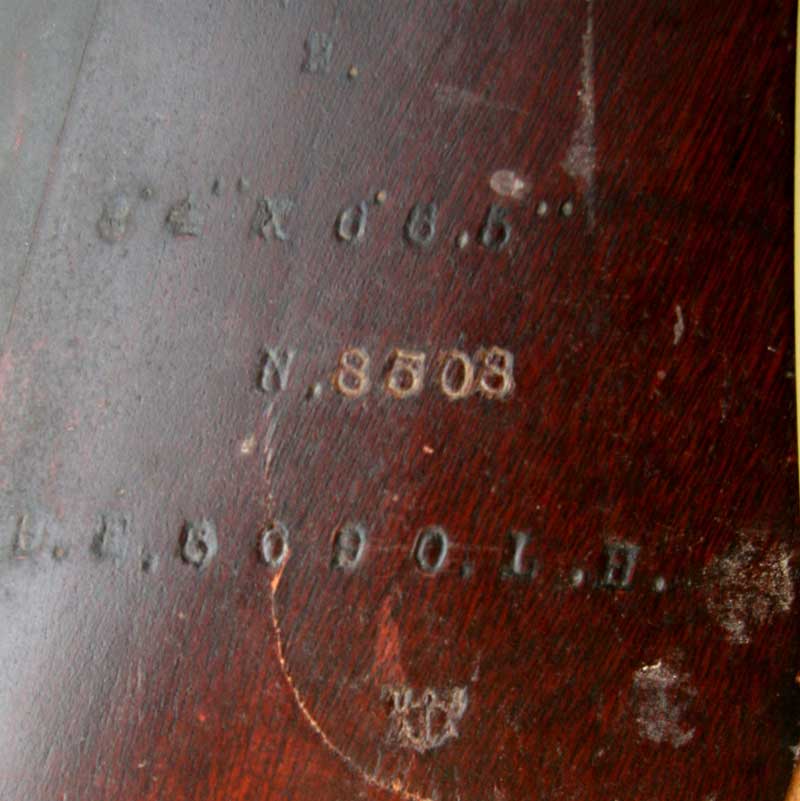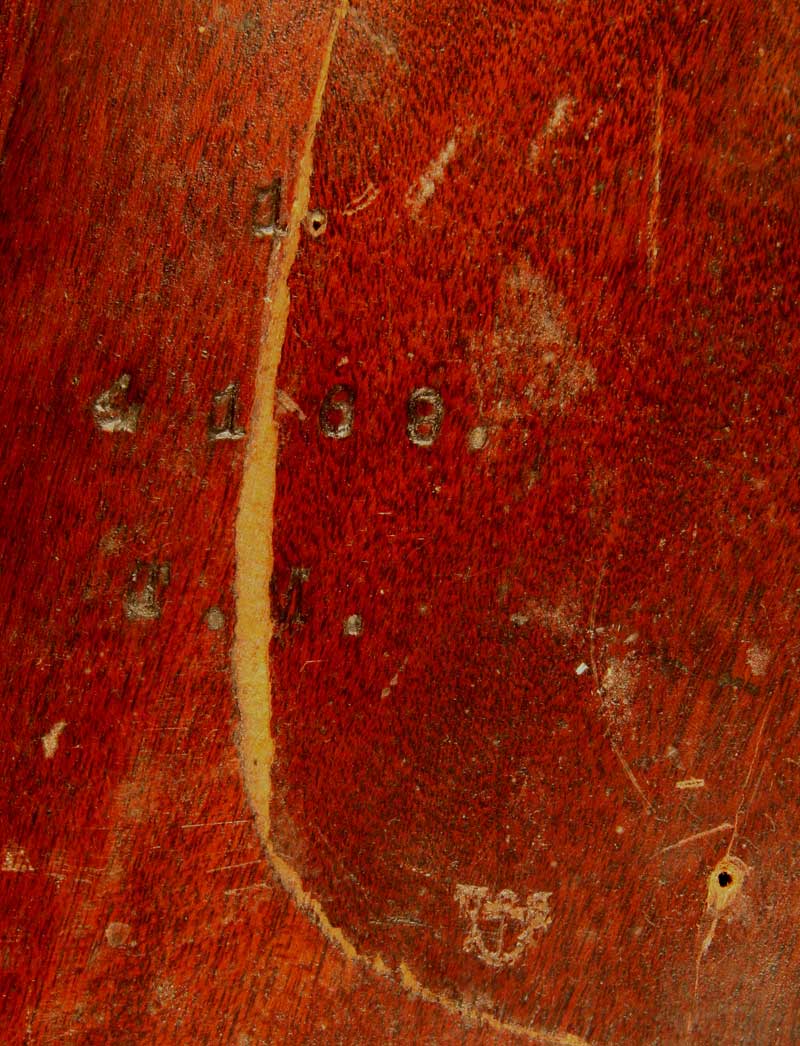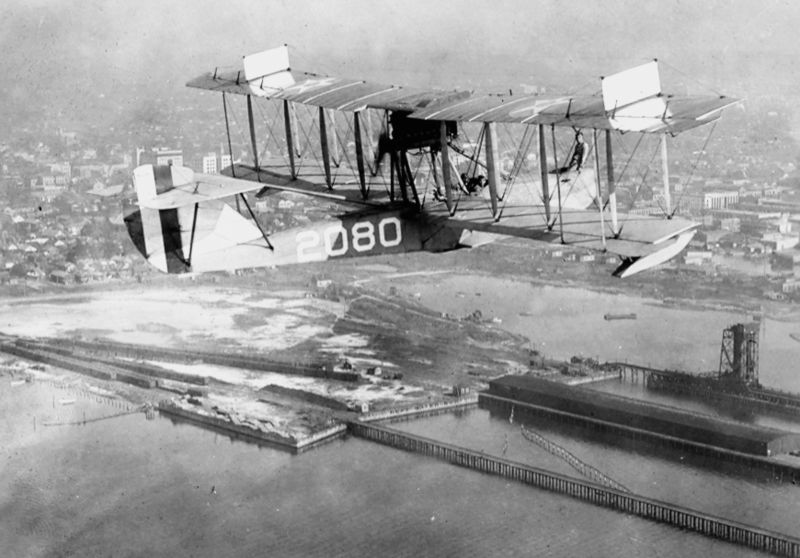4/10/11
|
Curtiss HS2L Flying Boat
c. 1917
Markings:
1.
4188
T.M.
2.
8'4" x 8'6"
N 8508
S.E. 5090 L.H.
Comments:Comments: This very commonly found propeller was actually only half of a 4-blade combination that was used on the Curtiss HS 2 L flying boat during WW1 and several years beyond. Two propellers were stacked on top of each other (note the additional hole on the bolt hole circle used for an alignment pin) to make the 4 blade pusher propeller that was used on the Liberty 375 HP engine. The tips are covered in fabric in addition to the copper sheathing, although in this propeller the fabric is unpainted and difficult to see in the photo. Several manufacturers, including Falcon, Matthews Brothers, Hartzell, Lang, Unit Construction, Paragon and probably others were involved in their production, and many varieties seem to turn up today. Variations in the pitch are reflected in the last two digits of the drawing number, SE5090, SE5050, etc. The "SE" prefix refers to "Steam Engineering", the branch of the Navy that procured aircraft propellers in the late teens and early twenties. An excellent example of this propeller and the aircraft it powered can be seen at the Canadian Aviation Museum in Ottawa.
Wood: Mahogany
Length: 8' 4"





